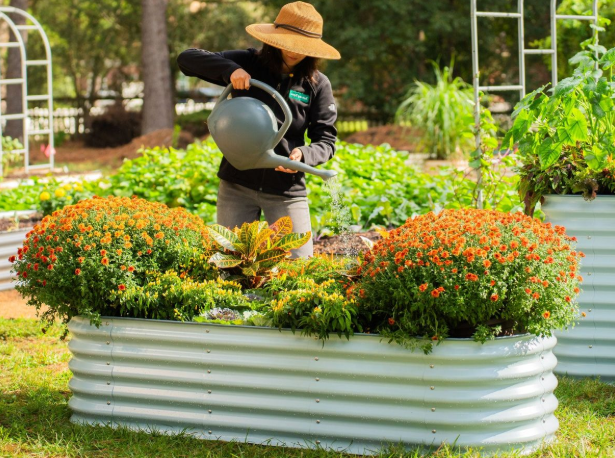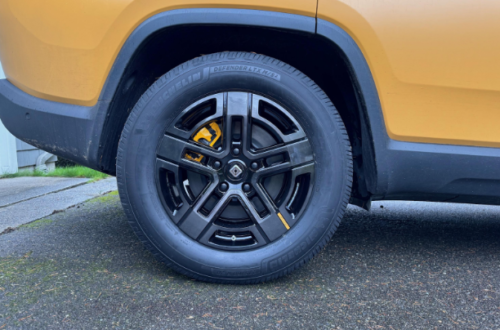Vego garden is a wonderful way to grow fresh and healthy vegetables and plants right at home. With a vego garden, you do not need a big yard or fancy tools to start. Anyone can create a small garden using simple pots, containers, or even indoor spaces. Growing your own food not only saves money but also helps you eat healthy every day. Vego garden is perfect for beginners because it is easy to manage and does not require much experience. You can grow leafy greens, tomatoes, peppers, and many more plants with a little care and patience. By setting up your vego garden, you can enjoy fresh vegetables every day, reduce trips to the market, and even involve your family in gardening activities. Watching your plants grow is fun and rewarding, and it brings a natural touch to your home environment.
Starting a vego garden is simpler than many people think. You just need to choose the right place, use good soil, and water your plants regularly. Even a small balcony or a sunny window can become a productive vego garden. Planning your garden carefully is important because it helps your plants grow faster and healthier. You can mix different vegetables and herbs to make your garden more colorful and useful. Vego garden also teaches patience and responsibility, as you must care for your plants every day. Additionally, growing food at home reduces waste because you only harvest what you need. Using natural fertilizers and avoiding harmful chemicals ensures that your vegetables are safe to eat. With a vego garden, you can enjoy fresh, nutritious, and delicious vegetables anytime. It is a fun way to connect with nature while improving your lifestyle and eating habits.
What is a Vego Garden and Why It’s Good for You
A vego garden is a small garden where you grow vegetables and herbs at home. The best thing about a vego garden is that it is easy to manage and anyone can start it. You don’t need a large space or expensive tools to grow your own vegetables. Having a vego garden helps you eat fresh and healthy food every day. Vegetables grown in your own garden have no chemicals and taste much better than store-bought ones. It also gives you a sense of satisfaction and joy when you see your plants grow and produce food. People who start a vego garden often feel happier and more connected to nature. It is also an eco-friendly way to grow food because it reduces plastic packaging and transport emissions. A vego garden can be a small hobby that turns into a lifelong healthy habit.
Simple Steps to Start Your Own Vego Garden at Home
Starting a vego garden is easy if you follow a few simple steps. First, choose a place with enough sunlight for your plants. Most vegetables need at least 4–6 hours of sunlight every day. Next, select containers, pots, or small boxes for your garden. Make sure they have holes for water drainage. Fill them with good soil, preferably a mix of garden soil and compost. Choose easy-to-grow vegetables like lettuce, spinach, or tomatoes for beginners. Plant seeds or small seedlings and water them regularly, but do not overwater. You should also keep your garden clean and remove dead leaves. With patience and care, your vego garden will start to grow and provide fresh vegetables for your home.
Best Plants to Grow in a Vego Garden for Beginners
When you start a vego garden, it is important to choose plants that are easy to grow. Some of the best options for beginners are lettuce, spinach, cherry tomatoes, peppers, and herbs like basil or parsley. These plants grow quickly and require less maintenance. Leafy greens are perfect because you can harvest them multiple times. Herbs are great because they add flavor to your meals and are very easy to grow in small spaces. Once you get used to gardening, you can try growing bigger plants like cucumbers, beans, or carrots. Choosing the right plants for your vego garden ensures that you get a good harvest and enjoy your gardening experience without frustration.
How to Choose the Right Soil and Containers for Your Vego Garden
Soil is very important for a vego garden. Plants need soil that is rich in nutrients and drains water well. You can mix compost with garden soil to make it healthy for your vegetables. Avoid using heavy clay or sandy soil alone because it may not support plant growth. Containers are also important. Make sure your pots or boxes have drainage holes so water does not stay at the bottom and harm the roots. The size of the container depends on the plant. Small plants like herbs can grow in small pots, while tomatoes and peppers need bigger containers. Good soil and containers are the first steps to a successful vego garden.
Watering Tips for a Healthy Vego Garden
Watering is one of the most important things for a vego garden. Plants need water to grow, but too much or too little can harm them. Water your plants in the morning or evening when the sun is not too hot. Check the soil before watering; it should be slightly dry on the top but moist below. Small plants need less water, and bigger plants need more. Using a watering can or small hose works best for home gardens. Consistent and proper watering helps your plants stay healthy, grow faster, and produce more vegetables.
Using Natural Fertilizers in Your Vego Garden
A vego garden grows best with natural fertilizers. You can use compost, kitchen waste, or organic fertilizers to feed your plants. Natural fertilizers improve the soil and give your plants the nutrients they need without harmful chemicals. Avoid using synthetic fertilizers because they can make your vegetables unsafe to eat. Regular fertilizing helps your plants grow strong, healthy, and tasty. Using natural fertilizers is also good for the environment and teaches kids about sustainable gardening.
How to Protect Your Vego Garden from Pests Naturally
Pests can harm your vego garden, but there are natural ways to protect your plants. You can use neem oil, garlic spray, or companion planting to keep pests away. Keeping your garden clean and removing dead leaves also helps prevent pests. Ladybugs and other helpful insects can protect your plants naturally. Avoid chemical pesticides because they can damage your vegetables. Taking care of your garden naturally ensures healthy plants and safe vegetables for your family.
Seasonal Plants for a Vego Garden Throughout the Year
A vego garden can produce vegetables all year if you choose seasonal plants. In summer, grow tomatoes, peppers, and cucumbers. In winter, grow spinach, lettuce, and carrots. Herbs like basil, parsley, and mint can grow almost all year. Planning your vego garden according to the seasons ensures that you always have fresh vegetables at home. Seasonal planting also keeps your garden active and enjoyable throughout the year.
Fun Ways to Involve Kids in Your Vego Garden
Vego garden is a great way to teach kids about plants and nature. Children can help plant seeds, water plants, and watch them grow. It is a fun activity that teaches responsibility and patience. You can also make small garden projects for kids like growing beans in cups or mini herb gardens. Kids enjoy harvesting vegetables and tasting fresh food they helped grow. Involving kids in your vego garden makes gardening a family-friendly activity and encourages healthy eating habits from a young age.
Indoor Vego Garden Ideas for Small Spaces
Even if you don’t have a yard, you can start an indoor vego garden. Use windowsills, balconies, or small tables to place your pots. Grow herbs like basil, mint, and parsley indoors. Leafy greens also grow well inside with enough sunlight. Indoor vego gardens are perfect for apartments and small homes. They make your home green and fresh and give you access to vegetables all year round. Small space gardening is easy, fun, and highly rewarding.
Common Mistakes to Avoid in Your Vego Garden
Many beginners make mistakes in their vego garden. Overwatering or underwatering is common and can harm plants. Using poor soil or containers without drainage can also cause problems. Planting too close together makes it hard for vegetables to grow. Forgetting to remove dead leaves or pests can affect plant health. Learning from mistakes and taking care of your garden carefully ensures success. Avoid these mistakes to enjoy a healthy and productive vego garden.
Benefits of Eating Vegetables from Your Own Vego Garden
Eating vegetables from your vego garden has many benefits. They are fresh, chemical-free, and taste better than store-bought vegetables. You save money and reduce waste by growing only what you need. Homegrown vegetables are full of nutrients, and gardening keeps you active and happy. Vego garden also reduces stress and connects you with nature. By eating vegetables from your own garden, you adopt a healthier lifestyle and enjoy food that you grew with your own hands.
Conclusion
Vego garden is an easy and fun way to grow fresh vegetables at home. It is perfect for beginners, kids, and anyone who wants to eat healthy. With the right soil, containers, sunlight, and care, anyone can start a successful vego garden. Growing your own food saves money, reduces waste, and brings joy to your life. Start small, plan carefully, and enjoy watching your garden flourish. Vego garden is not just about vegetables—it is about health, happiness, and connecting with nature every day.
FAQs
1. What is a vego garden?
A vego garden is a home garden where you grow vegetables and herbs easily.
2. Can I start a vego garden indoors?
Yes, you can use windowsills, balconies, or small pots to grow vegetables indoors.
3. Which plants are best for beginners?
Lettuce, spinach, cherry tomatoes, peppers, and herbs like basil or parsley are best for beginners.
4. How often should I water my vego garden?
Water your garden when the top layer of soil feels dry, usually once or twice a day depending on the weather.
5. Are natural fertilizers better than chemical fertilizers?
Yes, natural fertilizers are safer, eco-friendly, and make your vegetables healthy and tasty.



